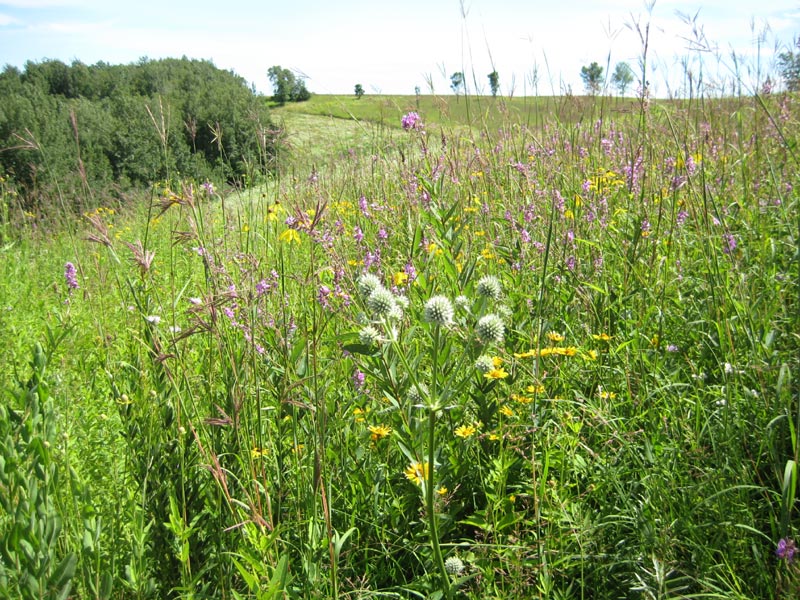
WEED CONTROL
Weed control is critical when establishing native species. Native seedlings put most of their energy reserves into root establishment during the first year or two, and above-ground growth can be very slow. Plants can be shaded out very easily by fast-growing weeds, which should be eliminated prior to planting to help the project be successful.
One method of weed control on large sites is the use of a broad-spectrum, glyphosate herbicide. This will kill any growing weeds, and subsequent sprayings (at about 1-month intervals, or whenever a site greens up with weeds again) will kill weeds that have germinated from seed stored in the soil. Sites that were previously planted with corn or soybeans will most likely only need to be sprayed once prior to planting. Old pastures may require several applications over multiple years to properly prepare a site. If more persistent broad-leaf weeds are present, herbicides such as 2,4-D can be sprayed along with the glyphosate application. Glyphosate degrades very quickly once it is sprayed and can be used up to the day before planting, while other herbicides should be applied at least two weeks prior to planting.
If spraying is not an option, another effective method of weed control is tilling. An initial tilling at a depth of 3 – 6 inches will kill most weeds, and subsequent shallow tillings at approximately 2 – 3 inches deep will eliminate newly germinated weed seedlings. This will gradually reduce the amount of weed seed present in the soil. Subsequent tillings should be shallow to prevent more deeply buried weed seeds from being brought to the surface.
If a temporary cover crop of Oats or Winter Wheat is planted, it will offer some weed control by simply crowding out the weeds. Tilling the cover crop under to prepare the soil for planting native seeds should kill any weeds that may have grown.
In smaller areas, smothering with black landscaping fabric, leaf compost, or grass clippings is an efficient method of weed control. The site should be kept covered for an entire year prior to planting.
SEED BED PREPARATION
The soil needs to be prepared into a firm, fine-textured seedbed and should be relatively free of debris before planting. The site can be tilled shallowly with a disc to achieve this. If the soil is still full of clumps, it can be dragged with a harrow or drag to break it up more finely. On smaller areas, tilling with a roto-tiller and then raking with a garden rake works well. If the soil is very soft, to the point where your foot presses down half an inch or more, the soil is too loose. Any seed spread here may be buried too deep to properly germinate. The soil should be packed down with a roller or culti-packer prior to seeding.


